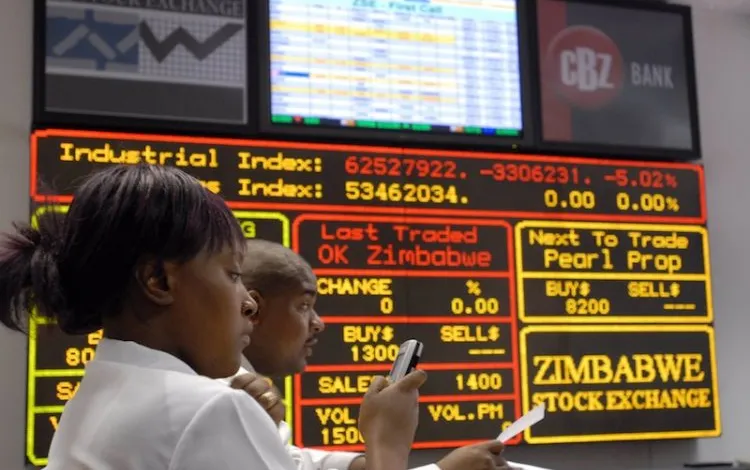
Profitability in Zimbabwe’s mobile network operators (MNOs) declined considerably during the first quarter (Q1), as costs aggressively increased, a new industry report showed.
The Postal and Telecommunications Regulatory Authority of Zimbabwe (Potraz) first quarter report showed MNOs struggled during the review period, highlighting trends emerging across industries.
The Zimbabwe Tourism Authority revealed recently that domestic arrivals slowed by 16% in Q1, while international arrivals also dropped.
In the mining sector, the Chamber of Mines said in April revenues for the industry also plummeted in Q1, following a poor run across several key minerals except gold.
These sets of sector data emerged as businesses complained that costs were rising in Zimbabwe, driven by such factors as a hostile tax regime, high fees and tariffs, as well as exchange rate volatility.
Business leaders blame these factors for undermining revenues and capital spending. In its report, Potraz said the pressures were also felt in Zimbabwe’s mobile networks.
“At a global level, the cost to income ratio worsened significantly by 16,85% points in the first quarter of 2025, signalling a decline in profitability by the MNOs,” Potraz said.
The cost to income ratio measures how much it costs a company to generate each dollar of revenue and is calculated by dividing a company’s operating expenses by its operating income.
- SanganaiHlanganani Expo dates set
- Govt challenges youths to participate in tourism
- Public relations :How to get ROI from expos like Sanganai/Hanganani
- HAZ annual congress to reset tourism success
Keep Reading
Given that Potraz said the industry’s cost to income ratio stood at 59,84% during the period under review.
This means for every ZiG that MNOs earned, they spent about 59,84 cents to generate that income.
The industry requires significant capital to enhance connectivity, quality of service, and network speeds.
Effort ate already underway to bolster the deployment of 5G base stations nationally.
The sector reported a 53,33% increase in 5G deployments during the review period, according to Potraz statistics, which also showed industry revenues slowing down.
“Total revenue for mobile network operators declined by 4,2% from ZiG6,42 billion to record ZiG6,15 billion in the first quarter of 2025,” the report said, noting that the quarter ending December 31, 2024 had seen stronger performances as markets were under the festive mood.
However, this growth was eclipsed by high demands for other consumer needs as the first quarters rolled.
“Higher revenues in the previous quarter might have been driven by increased consumer spending due to the festive season, while back to school demands could have affected consumers’ spending power in the quarter under review,” Potraz said.
“On the other hand, aggregate operating costs for MNOs increased by 33,46% from ZiG2,8 billion recorded in the fourth quarter of 2024 to ZiG3,68 billion in the first quarter of 2025.”
“Meanwhile, MNO total capital expenditure decreased by 50% from ZWG842,2 million to ZiG423,81 million in the quarter under review.”
Potraz added: “This is attributed to the growing demand for data services and enhanced internet connectivity, as well as the continued shift in consumer preference from consumption of voice-centric services to data-centric services,” the report noted.
There has been a bigger swing towards data services as consumers move to watch videos and other services brought by tech advances recently.
Before that mobile telecoms service operators mostly offered voice products to the market.
Potraz said internet and data services have become the biggest revenue contributor for MNOs.
These constributed 50,28% revenue for the industry during the quarter under review, from 48,91% in the previous quarter.
“Mobile internet/data traffic increased significantly by 17,31%, from 97,19 petabytes recorded in the fourth quarter of 2024, to 114,02 petabytes,” Potraz said.
Meanwhile, total mobile voice traffic increased by 5,38% to 4,2 billion minutes in the quarter under review, from 2024’s fourth quarter.
“The total number of active internet/data subscriptions increased by 0,45% from 11 889 736 recorded in the fourth quarter of 2024, to 11 942 857 in the first quarter of 2025,” Potraz said.
“Internet penetration rate, however, went down by 1,37 percentage points from 77,55% to reach 76,19% owing to a higher change population figure of 1,6% compared to an increase of 0,45% in internet/data subscriptions.”
Potraz said the broadband penetration rate also went down by 1,15 percentage points from 75,52% to 74,37%, due to the same reason.
If the population grows faster than subscriptions, then the penetration rate will fall — even though the number of subscriptions went up.
This is because penetration is a ratio, not just a count. If the denominator (population) grows more than the numerator (subscriptions), the ratio drops.
Going forward, Potraz said the sector was well positioned for growth, despite the challenges.
The authority noted this would be fuelled by the deployment of 5G network, the entry of low earth orbit satellite providers, and the increasing adoption of emerging technologies such as artificial intelligence and machine learning.
“With the ZiG exchange rate showing signs of stability, a more favourable operating environment is anticipated, instilling confidence in continued sector development throughout 2025,” Potraz added.











